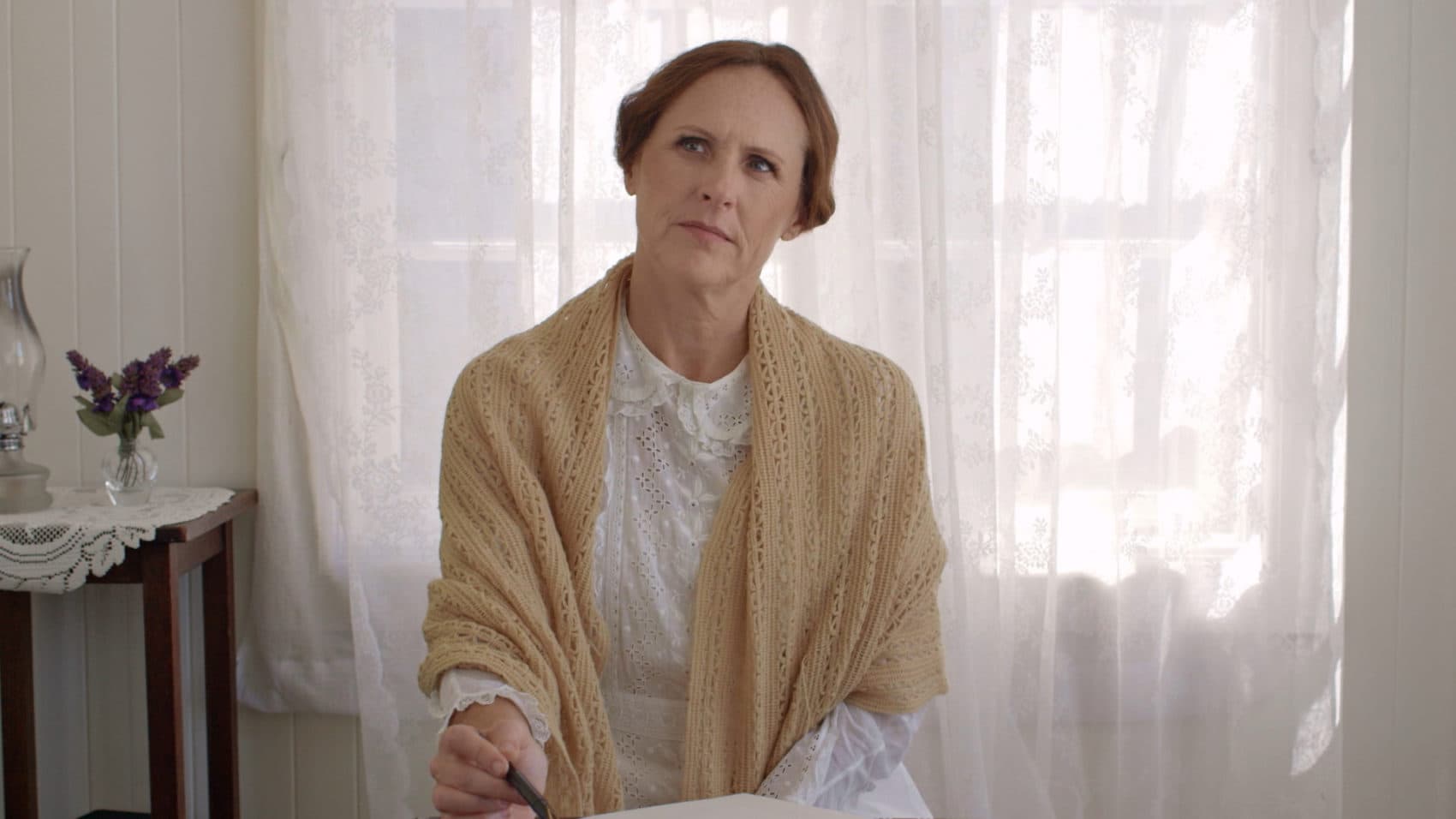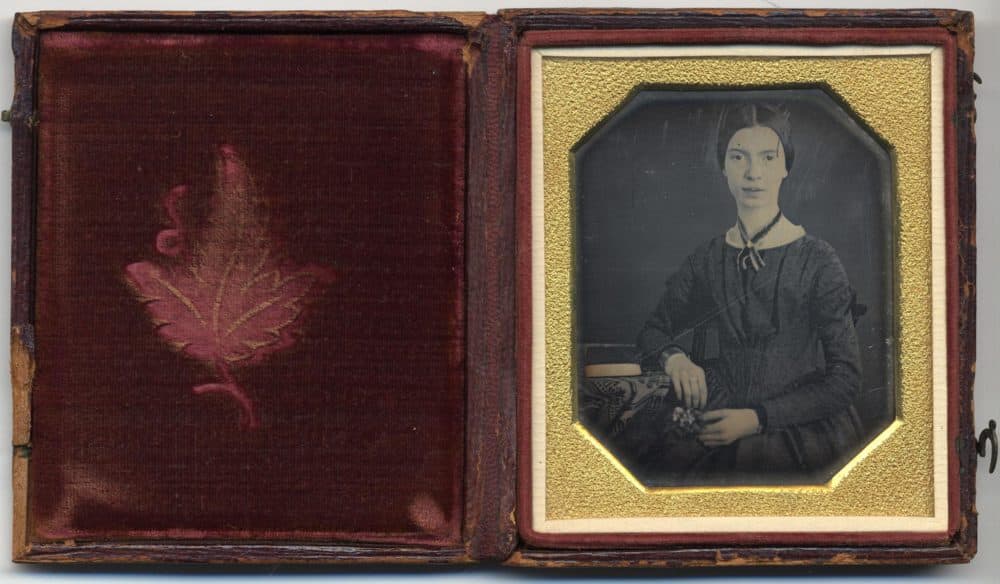Advertisement
A New Film Rewrites The Emily Dickinson Story — Again

The image and words of poet Emily Dickinson have been floating in a stream of pop culture for decades, most recently on refrigerator magnets and T-shirts. She's the subject of memes and hashtags.
A few decades ago, the 1976 Broadway play "The Belle of Amherst" may have helped perpetuate the caricature of Dickinson as a loveless recluse, writing verse behind a closed bedroom door.
Jump ahead 35 years, and the NBC comedy "30 Rock" brought Dickinson into the writers' room.
In one episode, Liz Lemon, played by Tina Fey, arrives in post-breakup hysteria, wearing a fanny pack, a chip clip in her hair. To the horror of her colleagues, she's adopted a cat and named it Emily Dickinson.
Then there's that old debate about why Dickinson's poems were published after her 1886 death. Was it her choice, or a sign of the times?
Recently, Hollywood made her a 19th-century feminist hero who tried to publish in a system run by men. In the 2017 biopic "A Quiet Passion," a young Dickinson coyly asks her father for help.
"I have one more favor to ask of you, father," says a young Dickinson, played by Emma Bell. "You are, I believe, on cordial terms with Dr. Holland, the editor of the Springfield Republican."
"And the Springfield Republican publishes poetry," says her father, played by Keith Carradine.
The paper published her poetry, and there's debate over whether J.G. Holland or Samuel Bowles was the editor who accepted and edited a Dickinson poem in 1858.
A More Intimate Portrait
The newest film is "Wild Nights with Emily," starring Molly Shannon, formerly of "Saturday Night Live." It's a dramatic comedy that portrays Dickinson and her sister-in-law Susan in an intimate, long-term relationship.
"I think it's pretty widely accepted at this point by anyone who's working with the letters and poems [that] Emily loved women," says Madeleine Olnek, the movie's writer and director.
The film plays up the proximity of Susan's and Emily's homes, side by side in the center of Amherst, Massachusetts (now home to the Emily Dickinson Museum).
Olnek says she imagined much discreet back-and-forth across the lawn.
"What was interesting to me was what a soap opera this all was," she says.
'The Way You Write — It's New'
The screenplay is based on the late-20th-century research of Dickinson scholar Martha Nell Smith, now at the University of Maryland.
Smith says she was as surprised as anyone when new technology in the 1990s allowed her to see Susan Dickinson's name had been physically removed from Emily's poems.
"We [were] able to see some erasures of Susan's name on the back of certain poems — [poems] that are very sexy, like, 'her breast is fit for pearls,' " she says.
Smith says that even before the discovery of the erasures, there was plenty of evidence of a relationship between the two women from existing correspondence. Olnek used some of that correspondence in her dialogue.

In one scene, it's the middle of the day, and Emily and Susan lay in bed, mostly undressed. Their pillow talk is literary gossip about Walt Whitman's recently published "Leaves of Grass," and about writers who were getting their work in The Atlantic Monthly, while Emily was not.
"Emily, your poems are ever marvelous to me," says Susan, played by Susan Ziegler. "When you come to me with your fresh pages and I read them, they're full of things — things that are startling. It's so good."
"Why don't more people feel as you do, then?" asks Shannon's Emily Dickinson.
"The way you write — it's new," Susan replies. "People don't know what to make of it. They've never seen it before."
Suddenly we hear the voices of Susan's children as they come running up the stairs. The two women scramble for their clothes.
What we know for sure about Emily Dickinson is that her most intense period of writing corresponded with the Civil War, and she was outspoken against slavery. Later, she was ill with some kind of kidney disease, which is a good reason not to leave your room.
'She Wanted There To Be Mysteries About Her'
Fans may want definitive answers, but Christopher Benfey, who teaches and writes about Dickinson at Mount Holyoke College, says she no doubt lived a much fuller life than was documented or imagined. But he said there's little scholarly consensus about her.
"And that's part of the excitement of it," Benfey says. "That's the particular challenge or obstacle of it. But for me, Emily Dickinson wanted there to be questions about her. She wanted there to be mysteries about her. Her favorite literary form was the riddle! She knew when she was alive that she was puzzling to other people, and she liked it."
When Dickinson wrote "There is no Frigate like a Book / To take us Lands away," movies and TV weren't an option.
And yet here's another one, part of the just-announced Apple TV lineup: a 19th-century coming-of-age comedy series called simply, "Dickinson."
This story was originally published by New England Public Radio.
This segment aired on April 18, 2019.
